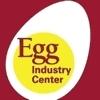Explore all the information on
Poultry genetics and reproduction
Poultry breeding has been one of the most impactful advances in the last 100 years. The role that improved global production of eggs and poultry meat have in reducing global hunger and food insecurity is difficult to overstate. The vast majority of these improvements have come from genetic selection for improved feed efficiency, along with streamlining of the overall production system, and better understanding of poultry nutrition. While the industrial approach to poultry production has created a highly consistent and dependable food source the world over, several problems threaten the long term sustainability of this model - including musculoskeletal and metabolic disorders, welfare concerns, and the need to adapt to a changing climate. Researchers in poultry breeding and genetics utilize quantitative, population, and molecular genetic techniques to help understand the effects of selection for economically important traits and enhance genetic performance through changes in environment and management strategies.
Mr. Komanduri S Venugopal, CEO at Srinivasa Farms, highlights the remarkable partnership with Hy-Line in transforming India’s poultry sector. By leveraging global expertise and local strengths, they’ve built an ecosystem supporting farmers with Hy-Line day-old chicks, high-quality feed, and an expanding retail network. ...
Comments : 0
Recommendations: 0
Janet Fulton, Hy-Line Senior Molecular Geneticist [Retired], explains her research on chicken candidate genes associated with survival following an HPAI Infection, in this Engormix interview....
Comments : 0
Recommendations: 0
INTRODUCTION Foodborne infections caused by Salmonella enterica are of primary importance worldwide. The WHO estimates that Salmonella causes more than 153 million illnesses, 120,281 deaths, and 8.27 million disability-adjusted life years annually (1). As foodstuffs can be contaminated in several parts of the food chain, a “from farm to table” approach is necessary to understand the epidemiology of Salmonella. Although Salmonella can contaminate vegetables, food-producing...
Comments : 0
Recommendations: 0
1. Introduction Avian metapneumovirus (aMPV) is a highly infective virus that affects turkeys and chickens, causing turkey rhinotracheitis (TRT) and swollen head syndrome (SHS), respectively. aMPV also has the capacity to infect other avian species [1–3]. The virus is primarily associated with upper respiratory infections, predisposing birds to opportunistic bacterial pathogens, which can result in severe respiratory disease, high morbidity, and mortality rates....
Comments : 0
Recommendations: 1
Avian Influenza Virus (AIV) poses a significant threat to both avian populations and human health due to its potential for zoonotic transmission. The emergence of highly pathogenic strains necessitates the development of innovative control strategies. This abstract presents a comprehensive overview of the potential of CRISPR-based technologies, Quorum Sensing (QS) systems, and the application of the synthetic inducer molecule Arbitrium as strategic control measures for mitigating AIV...
Comments : 0
Recommendations: 1
Damaging behaviors in poultry include feather pecking, vent pecking, and toe pecking. While feather and vent pecking are well-known welfare problems in poultry that have received significant attention from researchers and farmers, toe pecking remains relatively unknown. Therefore, this article aims to shed...
Comments : 0
Recommendations: 0


Bacillus licheniformis-Fermented Products Improve Growth Performance and Intestinal Gut Morphology in Broilers under Clostridium perfringens Challenges (Extract)
Suggested link
INTRODUCTION Non-typhoidal Salmonella (NTS) enterica subsp. enterica is a foodborne pathogen that causes »1.2 million infections in the United States of America (USA) annually (Scallan et al., 2011), and was responsible for more than 95 million cases of diarrheal disease and 50,771 deaths worldwide in 2017 (Stanaway et al., 2019). Human infections are usually mild and manifest as a self-limiting gastroenteritis. However, high-risk populations such as the infants, the elderly,...
Comments : 0
Recommendations: 0
Nontyphoidal Salmonella (NTS) represents one of the leading causes of foodborne gastroenteritis worldwide (1, 2). The global burden of NTS infections is 93.8 million cases, and it is estimated that NTS causes around 155,000 deaths annually (3). Unfortunately, there is a lack of information about surveillance studies of NTS in Latin American countries, and reports on NTS outbreaks are scarce in this region (4). In South American countries, there has been an increase in reports of...
Comments : 0
Recommendations: 0
Avian influenza (AI) significantly threatens global poultry production and public health. Efforts to combat this viral disease have been predominantly focused on vaccination strategies, with limited success in controlling its spread. This study explores a novel approach utilizing genome editing techniques to enhance avian influenza resistance in chickens. Specifically, we employ CRISPR-Cas9 technology to target the ANP32 genes, endogenous proteins co-opted by influenza for replication in...
Comments : 0
Recommendations: 0
I. INTRODUCTION Brooding chicks with maternal care can improve the welfare of chicks; specifically, by improving prosocial behavior and reducing feather pecking (Edgar et al., 2016). Yet providing chicks mother hens in industry is impractical and a biosecurity risk. Artificial components of maternal care may provide some benefits to chicks and improve welfare. Indeed, there is some evidence that lighting that mimics the maternal environment, synthetic maternal olfactory cues and...
Comments : 0
Recommendations: 0
1. Introduction Infectious bronchitis (IB) and Newcastle disease (ND) are highly transmissible diseases that cause substantial economic losses in the poultry industry [1, 2]. Infectious bronchitis is caused by infectious bronchitis virus (IBV), a gammacoronavirus with a single-stranded positive sense RNA genome [3]. Newcastle disease is caused by virulent strains of Newcastle disease virus (NDV), a paramyxovirus with a single-stranded negative sense RNA genome [4]. Infectious...
Comments : 0
Recommendations: 1
1. Introduction Non-typhoidal Salmonella (NTS) comprises multiple serovars of Salmonella enterica that can cause self-limiting or invasive enteric disease and are transmitted to humans mainly through contaminated food [1,2]. The consumption of poultry products represents a common route of NTS transmission to humans [3], and the increasing prevalence of antimicrobial resistance (AMR) among NTS isolates has become a serious concern [4,5]. Most gastrointestinal infections...
Comments : 0
Recommendations: 0
Introduction Avian influenza viruses (AIV) infect animals and humans [1] and thus are of major relevance under the one health context. They are enveloped viruses belonging to Alphainfluenzavirus from Orthomyxoviridae family [2]. These negative sense and single-stranded RNA viruses present a genome that is fragmented into eight segments which encode for eleven proteins. These proteins possess individual function or form complexes during viral replication. The mechanisms underlying...
Comments : 0
Recommendations: 0
Gérard Léveque (Global Manager Animal Health at Hendrix Genetics) talks about the main challenges in the poultry industry and how to better communicate advances in genetics, in this Engormix interview....
Comments : 0
Recommendations: 0
Brian Jordan (University of Georgia) explains how False Layer Syndrome affects poultry and what can be done to prevent it, in this Engormix interview during IPPE 2024 in Atlanta, USA....
Comments : 1
Recommendations: 1
INTRODUCTION Natural medicinal products originating from herbs and spices have been used as feed additives for poultry (Guo et al., 2004). Compared with synthetic antibiotics or inorganic chemicals, these plant-derived products have proven to be natural, less toxic, residue-free, and are thought to be ideal feed additives in feeds for animal production (Wang et al., 1998). Any attempt to improve poultry production and increase its efficiency, therefore, needs to focus on the...
Comments : 0
Recommendations: 0
Introduction Heat stress (HS) is one of the most challenging environmental stressors despite the modern climate control equipment in broiler chickens’ houses. Broiler flocks may be seasonally exposed to HS that varies in intensity according to the relative humidity of the region [1]. Multiple studies have identified the various adverse effects of acute or chronic HS on chickens, such as a severe reduction in feed intake and growth [2–4], systemic alkalosis [5],...
Comments : 0
Recommendations: 1
Introduction It is widely appreciated that a variety of new technologies and human behavioral change will be required to feed an estimated population of 10 billion people by 2050 with environmentally sustainable production. It is also estimated that about one third (in weight) of the world’s food is lost or wasted annually. In 2021 the poultry industry supplied some 286 eggs per capita to consumers in the US market alone [1]. Remarkably, this has been achieved with an...
Comments : 0
Recommendations: 1
Introduction Influenza A viruses (FLUAV) from waterfowl are of global concern. Multiple pandemics have occurred as the product of genetic exchange between FLUAV circulating in humans and the avian reservoir (1). FLUAV contains eight gene segments, two of which encode for the surface glycoproteins hemagglutinin and neuraminidase (HA and NA, respectively). The other six for the internal gene cassette, comprised by the set of polymerases, PB2, PB1 and PA, the nucleoprotein NP, the...
Comments : 0
Recommendations: 0
Oregano essential oil (OEO) and carvacrol, the main compound of OEO, are considered as a reference for biological activities of essential oils (EO). OEO has positive effects on gut and immune system developments potentially related to antimicrobial and antioxidant activities in chickens (Brenes and Roura, 2010). Embryonic development accounts for one-third of the lifespan of modern broiler chickens, and has the potential to determine performance in later life. In-ovo injection is a powerful...
Comments : 0
Recommendations: 1




.jpg&w=3840&q=75)














.jpg&w=3840&q=75)

.jpg&w=3840&q=75)



.jpg&w=3840&q=75)













